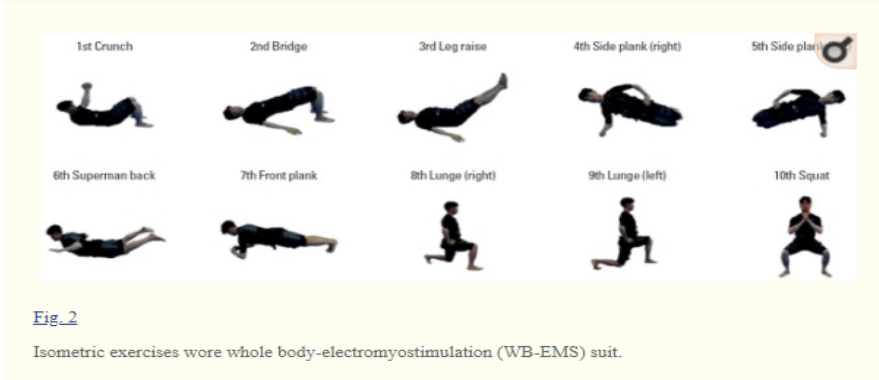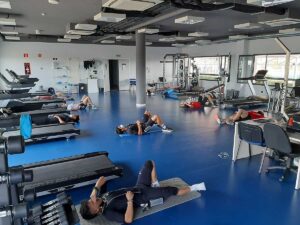Introduction
To avoid the side effects related to the WB-EMS, guidelines for efficacy and safety were established, which included control of electrical power, consideration of the subject’s health and training of trainers (Kemmler et al., 2016b).
Method
The subjects conducted a previous survey where several subjects were disqualified. The subjects were randomly divided into two groups: control group (n = 33) and WB-EMS group (n = 31).
For each group, 20-minute WB-EMS sessions were held 3 times a week on two non-consecutive days to allow a 48-hour rest interval between each session. For the WB-EMS protocol, a biphasic, rectangular and compensated wave was applied with a frequency of 85 Hz and a pulse width of 350 μs and the intensity was raised to a peak voltage of 160 V. The duty cycle of the electrical impulse was6 seconds of work and 4 seconds of rest. Ten types of isometric movements were applied in this study.

Results
The psychophysiological factors data for the WB-EMS group were analyzed for differences between pre and post values after the experiment. The level of pain after the experiment was significantly reduced. The anxiety level was also significantly reduced after the experiment. Fatigue levels after the experiment decreased significantly. These results suggest that the application of WB-EMS did not negatively affect the psychophysiological factors.

Conclusion
This study suggests that a full-body suit equipped with an electrical muscle stimulation device can improve cardiopulmonary factors and psychophysiological indications.
Additional research is required to confirm the most effective methods of wearing WB-EMS suits, to identify the populations in which it is most beneficial and to ensure a greater degree of medical safety.
Bibliography
Jee YS. (2018). The efficacy and safety of whole-body electromyostimulation in applying to human body: based from graded exercise test. J Exerc Rehabil, 14(1):49-57.







